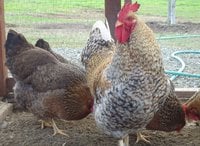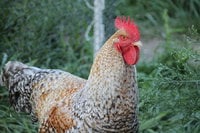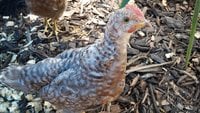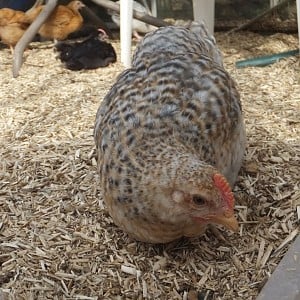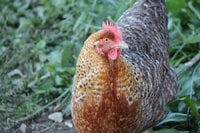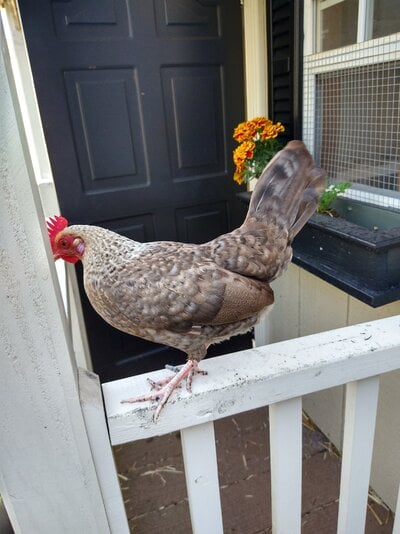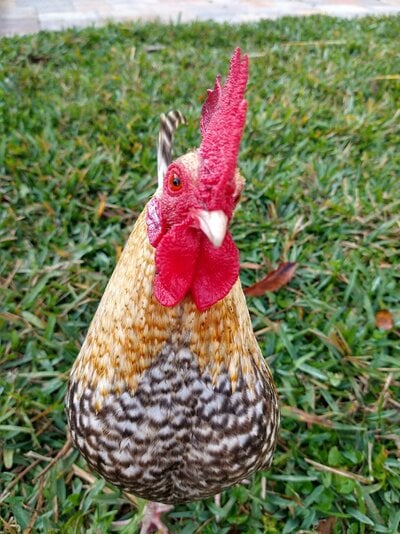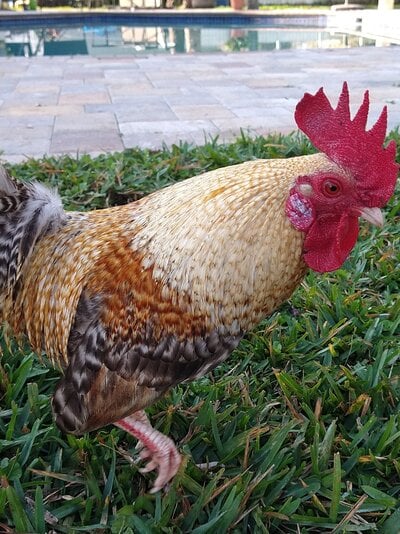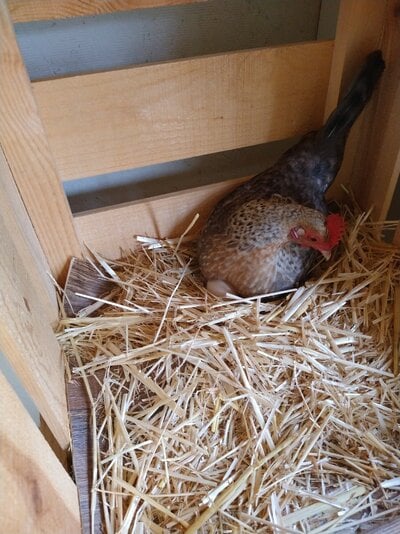General Information
- Breed Purpose
- Dual purpose
- Comb
- Single
- Broodiness
- Occasional
- Climate Tolerance
- Cold tolerant
- Egg Productivity
- Good
- Egg Size
- Large
- Egg Color
- Brown
- Breed Temperament
- Friendly, gentle, mild tempered, handles well
- Breed Colors/Varieties
- A cuckoo red partridge pattern
- Breed Size
- Large fowl
- APA/ABA Class
- Not recognised
- Color
- A cuckoo red partridge pattern
The Bielefelder is a relatively new breed, development beginning in the 1970’s by Gerd Roth in the area of Bielefeld, Germany, hence the breed's name. They were successful in creating a large fast maturing dual purpose breed with a kind calm temperament and excellent cold tolerance. The hens are friendly, gentle birds, excellent layers for a duel purpose breed, laying about 200 large dark brown eggs a year, and they are good winter layers. They will go broody occasionally. The roosters are said to have exceptionally nice temperaments. The breed has the added benefit of being auto-sexing by colour at hatch.
A number of breeds were used in the creation of the Bielefelder including Malines, New Hampshire Reds and Welsummers. They are a colorful attractive bird, in a cuckoo red partridge pattern reminiscent of the Legbars.
They are not APA recognised.
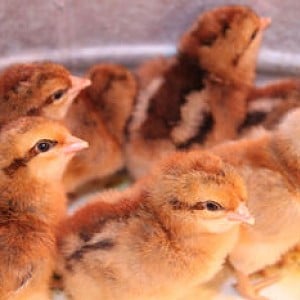
Bielefelder chicks
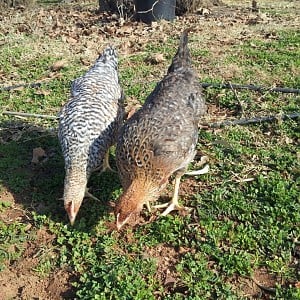
Bielefelder juveniles
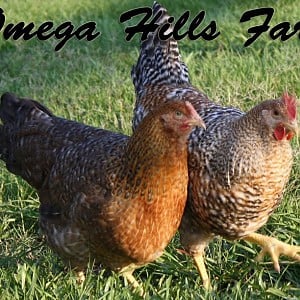
Bielefelder hens
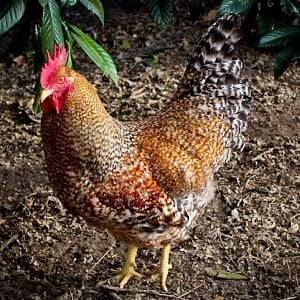
Bielefelder rooster
For more information on this breed and their owners' and breeders' experiences with them, see our breed discussion here: https://www.backyardchickens.com/threads/chicken-breed-focus-bielefelder.1069851/

